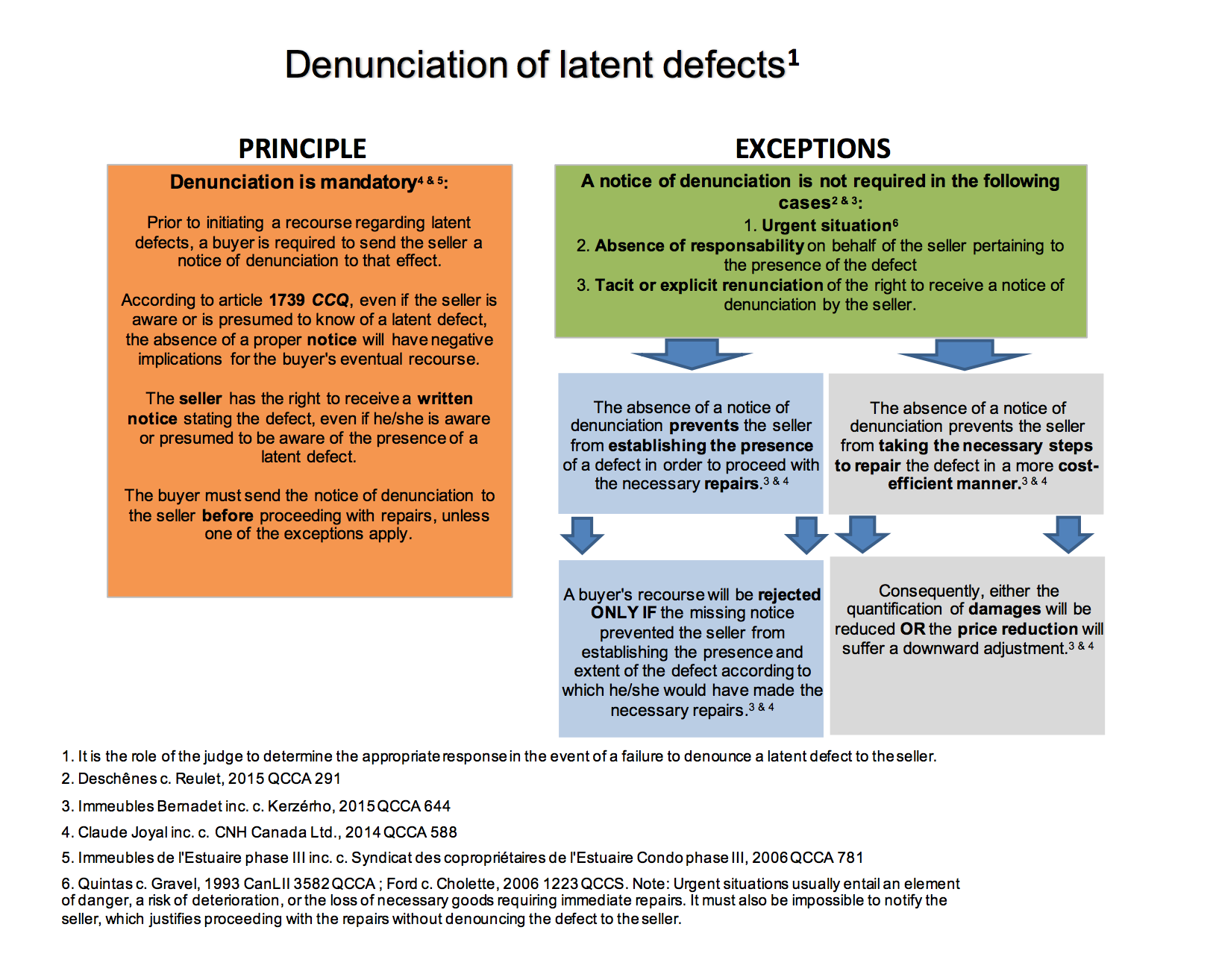DISCOVERY OF A LATENT DEFECT
Notice of denunciation: within 6 months of knowledge of the defect
A buyer must denunciate the latent defect to the seller within a period of 6 months from the date of knowledge. Failure to notify the seller of the defect within 6 months may result in the dismissal of your claim against the seller.
However, there are exceptions to the 6 months notice of denunciation. As shown in the below chart, a buyer may perform urgent repairs without providing a notice of denunciation. This is an exception to the rule of notice of denunciation and shall not affect your rights to claim damages pursuant to the latent defect.
The buyer would be required to prove that the repairs performed were in fact urgent that required immediate action.
This denunciation may be verbal but it is highly recommended to denunciate the latent defect in writing either via email, fax, registered mail or by Bailiff. It is important to have proof of receipt to confirm that the seller has duly received your notice of denunciation.

Obligations and rights regarding any repairs performed:
It is also crucial that no repairs be performed to the alleged latent defects before sending the seller a letter of denunciation and notification to allow the seller to access the property and provide him/her the opportunity to repair the defects himself/herself.
In the event that you as the seller were deprived of the opportunity to observe and analyze the allegations of a latent defect at hand and/or unable to hire an expert to verify the said allegations to defend against the alleged latent defects could be construed as a renunciation of the buyers right to claim damages for a possible latent defect.
The question of good faith of the buyer may be put in doubt due to the lack of transparency by failing to provide the seller a letter of denunciation or the ability to access the property prior to the repairs being conducted.
Buyer’s obligations to allow seller to access property:
Once the letter of denunciation has been provided by the buyer to the seller, the seller can then indicate whether he/she intends to visit and access the property
The buyer has an obligation to provide the seller an opportunity to visit and access the property to allow the seller make observations, personally or through a professional expert of his/her choice, in particular with respect to the nature and extent of the latent defects and indicate whether or not he/she intends to propose a viable and time-appropriate solution.
[1] Translated from French to English: VIENS, Isabelle, La prudence et la diligence de l’acheteur en matière de vices cachés : un concept à définitions multiples dans Droit immobilier – Deuxième colloque, vol. 15, Cowansville, Éditions Yvons Blais, 2012, p. 43
If you are looking for a law firm with reasonable rates, quick and efficient turnaround time for your files and who provides personalized and effective follow-ups, call Schneider Attorneys at (514) 439-1322 ext. 112 or email us at client@schneiderlegal.com
The above noted text should not be construed as providing legal advice or a statement of your claim. The process highlighted above are merely parameters and barometers and do not constitute any warranties and guaranties with regards to your file at hand. We strongly recommend that you seek legal advice with a licensed attorney from the Barreau du Quebec or a notary at the Chambre des Notaires. Each case must be seen and analysed on its merits as the legal process may be complex and cumbersome.





